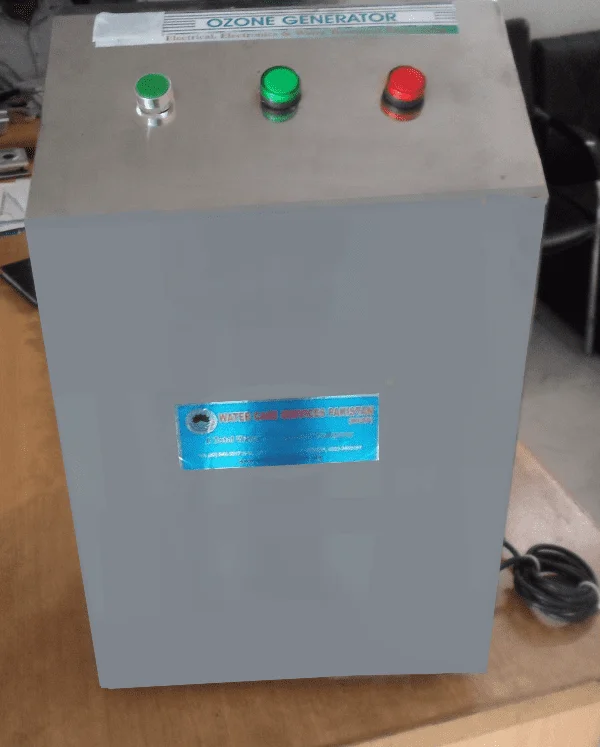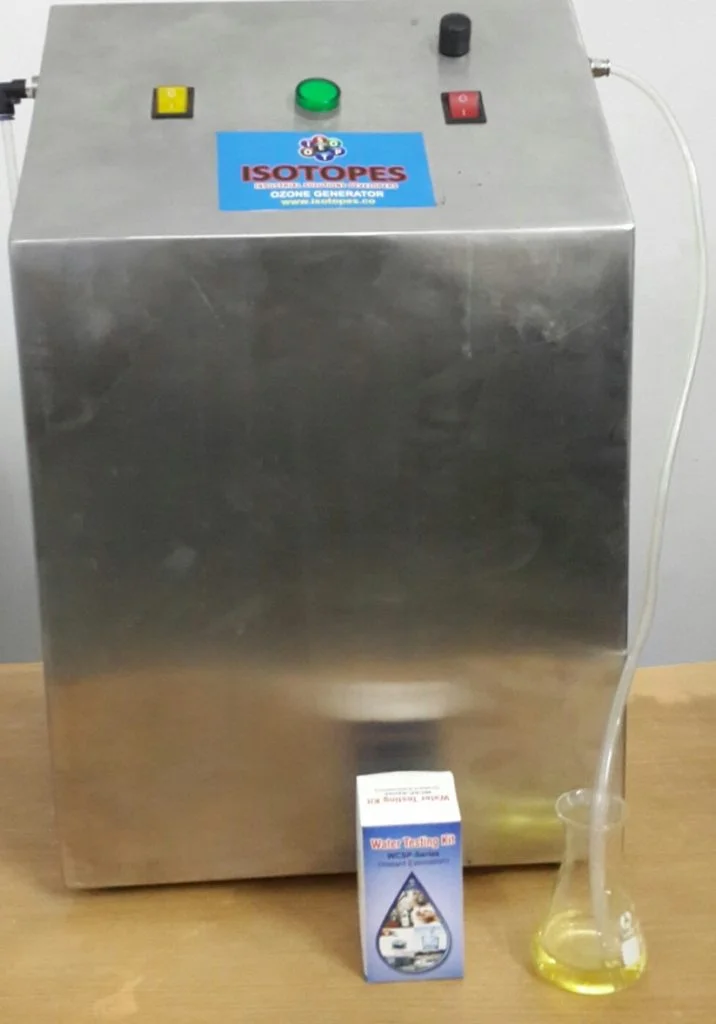Ozone Generator
Ozone was first used as a disinfectant in France in 1900. Over then, it has been used worldwide as a disinfecting agent. Advance research in the field of ozone has made it compatible for wastewater treatment as well. It can be used in the treatment of odor and refractory organics.
The ozone generator is installed onsite as ozone is an unstable gas and readily converts to oxygen.
How Is Ozone produced?
The ozone generator is predominantly utilized in the disinfection of water. Disinfection is termed as the destruction of micro-organisms that causes infectious diseases.
Ozone is most commonly produced by corona discharge. This method produces ozone by creating a constant, controlled spark across an air gap through which feed gas is passed. The feed gas can be dry air or oxygen enriched air. The feed gas is dried to a dewpoint of – 60 ˚F.
The gas is dried because, in the presence of moisture, nitric oxide (produced by corona discharge) will form nitric acid which will corrode the ozone generator.
Ozone, as compared to chlorine, is a powerful oxidizer than chlorine as it efficiently oxidizes the organics that cause taste, color and odor problems without leaving a residual. Ozone comes in contact with the cell wall of the bacterial cell and creates holes in it.
The bacterial cell begins to lose its shape while ozone molecules continue to create the hole in the cell wall. After thousands of ozone collisions, the bacterial cell collapses. The contact time required is only 1 – 6 minutes. Ozone has a half-life of 22 minutes in water.
Harness the power of ozone generation, seamlessly integrated with a filling machine, and Automatic Water Dispenser ATM ensuring a sterile and contaminant-free environment for efficient and reliable packaging processes. Elevate your production standards with the natural disinfection capabilities of ozone.
The components of the ozone generator include:
Feed gas preparatory:
The feed gas can consist of either dry air or concentrated oxygen. Dry air is defined as air that has been dried to a dew point of -60°F or lower. Concentrated oxygen, on the other hand, denotes oxygen that is at least 90% pure with its moisture content removed.
Power input:
The primary power demand arises from the conversion of oxygen into ozone. Supplementary power needs encompass the preparation of feed gas, the ozone contact process, as well as the power necessary for control, instrumentation, and monitoring facilities.
Ozone generating device:
Ozone is typically generated on-site for disinfection purposes using a corona discharge method. The ozone is produced by applying high voltage between closely spaced electrodes, using either air or concentrated oxygen as the source.
The high-energy corona, generated through the process mentioned above, separates one oxygen molecule, which then combines with two other oxygen molecules to form an ozone molecule.
The gas stream produced by this method using air results in ozone concentrations of 1-3% by weight, while using pure oxygen yields ozone concentrations of 3-10% by weight.
Contact basin:
The most critical process during use of ozone as the disinfectant is the proper mixing of ozone in the water. Two types of systems are used for this purpose i.e. ozone transfer via bubble diffusion or venture.
Bubble diffusion refers to the ozone transferred by diffusers. The diffusers create small bubbles of ozone in water. As the bubble rises, the gas at the edge of the bubbles will transfer into the water.
Venturi injection system work by forcing water through the conical body. This process creates a pressure differential between inlet and outlet ports resulting in a vacuum inside the injector body. This vacuum causes rapid suction of ozone through the suction port.


Advantages:
Powerful Disinfectant: Ozone is a strong oxidizing agent, making it effective in killing bacteria, viruses, and fungi.
Air Purification: Ozone generators can eliminate odors and improve air quality by breaking down pollutants.
Water Treatment: Ozone is used for water purification, effectively removing contaminants.
Chemical-Free: Ozone generators do not require the use of additional chemicals for their disinfectant properties.
Disadvantages:
Health Risks: High concentrations of ozone can be harmful to humans and pets, causing respiratory issues and other health problems.
Limited Residual Effect: Ozone has a short half-life and may not provide long-lasting disinfection.
Regulatory Restrictions: Some regions have regulations on the use of ozone generators, especially in indoor environments, due to health concerns.
Ineffectiveness in Certain Conditions: Ozone may be less effective in high humidity or in the presence of certain organic materials.
An ozone generator is a device that produces ozone, a molecule composed of three oxygen atoms. It works by using electrical discharges or UV light to break apart oxygen molecules, creating ozone.
Ozone generators are used for air and water purification, odor control, food preservation, and various industrial processes. They are also employed in medical settings for disinfection.
While ozone is an effective disinfectant, high concentrations can be harmful. It’s crucial to use ozone generators in accordance with safety guidelines and ensure that occupied spaces are properly ventilated.
Yes, ozone generators are known for their ability to neutralize and eliminate odors by oxidizing the molecules causing the unpleasant smells.
The time required depends on factors such as the size of the space or volume of water, ozone concentration, and the specific application. Generally, ozone acts quickly, but treatment times can vary.
Regular maintenance, such as cleaning ozone-producing elements and checking for any malfunctions, is recommended. Follow the manufacturer’s guidelines for optimal performance.
Yes, ozone generators are effective in eliminating mold and mildew. However, it’s essential to follow proper procedures and ensure that the treated area is well-ventilated before reoccupying.
Users should follow safety guidelines provided by the manufacturer, including avoiding prolonged exposure to high ozone concentrations, ensuring adequate ventilation, and using the device in unoccupied spaces.
Ozone generators may have limitations in treating certain types of pollutants or contaminants. Understanding the specific capabilities of the generator in relation to the intended application is crucial.
Yes, ozone generators are commonly used for water treatment to disinfect and remove impurities. They are effective in eliminating bacteria, viruses, and other microorganisms in water.
